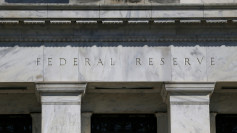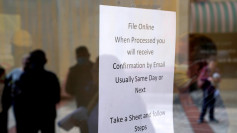U.S. inflation climbed to 3% in September, coming in slightly below economists' expectations and reinforcing market confidence that the Federal Reserve will move forward with another interest rate cut at its policy meeting next week.
The Consumer Price Index, delayed more than a week by the federal government shutdown, showed prices rising 3.0% over the past 12 months, up marginally from August's 2.9%, the Bureau of Labor Statistics reported Friday. On a monthly basis, consumer prices increased 0.3%, while economists surveyed by Bloomberg had expected a slightly higher 3.1% annual rate.
Core inflation, which excludes volatile food and energy categories, also rose 3% year-over-year - easing slightly from August's 3.1%. That figure came in below forecasts, suggesting some moderation in underlying price pressures despite elevated housing and goods costs.
The report, which had originally been scheduled for release on Oct. 15, was compiled by a small team of BLS analysts recalled to work during the shutdown. The CPI is critical for determining next year's cost-of-living adjustment for Social Security recipients. Following the release, the Social Security Administration announced a 2.8% benefits increase for 2026, translating to roughly $56 more per month for the average retiree.
Wall Street responded positively to the cooler-than-expected inflation data. The Dow Jones Industrial Average rose 66 points, or 0.1%, in premarket trading, as investors priced in a higher likelihood of continued monetary easing. "Inflation coming in weaker-than-expected further solidifies a continuation of the Federal Reserve's rate cutting cycle, at least for the next two meetings," said Skyler Weinand, chief investment officer at Regan Capital.
The Fed, which delivered its first rate cut in nearly a year last month, is expected to lower the benchmark federal funds rate again next Wednesday. The size of that cut remains in debate among policymakers. Fed Governor Stephen Miran, appointed by President Trump, has advocated for a half-point reduction, while others, including Governor Christopher Waller, have favored a smaller quarter-point move.
Economists said the inflation data could give the central bank more confidence to proceed with its easing plans, particularly as the protracted government shutdown leaves gaps in broader economic reporting. "Once the government reopens and if we start to see weak unemployment data and the unemployment rate rises precipitously towards 5%, we could expect either a 50 basis point cut for December or the Fed to communicate a string of cuts in 2026," Weinand said.






